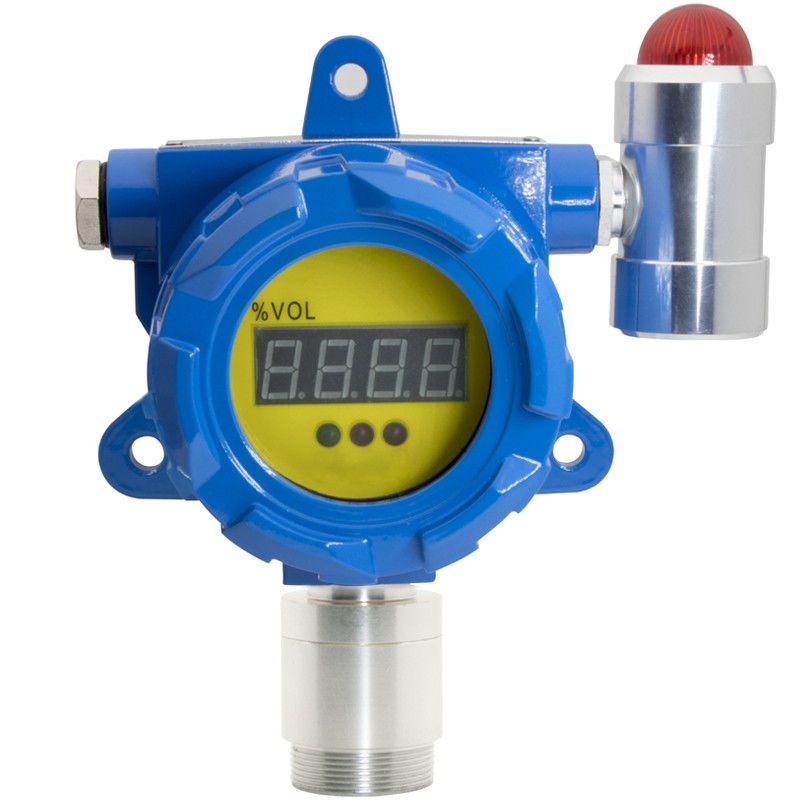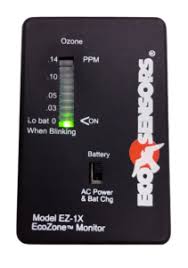The 3 methods to measure ozone gas
Plus
Linear response- Good repeatability and accuracy -Very quick response time (1-2 seconds) - Long battery life - Can measure ozone accurately up to 20 ppm - Moderate resistance to interference
Minus
Humidity can affect sensor readings - Sensitive to EMF/RFI Limited sensor life (often max of 12-18 months), even if in storage - Decreased accuracy at low ozone levels (below 0.1 ppm)
Area of use
Personnel (portable) safety monitoring (especially for shift-long use) - Ozone leak detection - Stationary ambient ozone monitoring - Ozone control scenarios (alarms, exhaust fans, ozone generators, etc)
2, Heated Metal Oxide Sensor (HMOS) / Gas Sensitive Semiconductor (GSS)
A heated metal oxide semiconductor (HMOS) sensor works by heating a small substrate to high temperature (around 300° F / 149° C). At this temperature, the substrate is very sensitive to ozone and exhibits a change in resistance that is proportional to the volume of ozone which contacts its surface. The circuitry of the monitor interprets this change in resistance and displays the corresponding ozone level on the display as either ppm or ppb.
Plus
Very responsive to low levels of ozone ozone (below 0.1 ppm) - Least expensive monitoring technology - Excellent repeatability and accuracy - Long sensor life if stored properly
Minus
Slow start-up (can require 8-24 hours warm-up time) - Slower response time to ozone (compared to electrochemical) - Very sensitive to interference - Shorter battery life due to heated sensor element - Not linear at ozone levels above 1 ppm - Maximum temperature threshold of 122° F or less (depending on model)
Area of use
Ambient ozone safety monitoring (especially below 0.1 ppm) - Portable ozone monitoring (especially below 0.1 ppm) - Ozone control scenarios (especially below 0.1 ppm) - Ozone leak detection
3, UV Absorption – Professional
An ozone molecule has a UV absorption maximum at 254 nm. In a controlled environment this means that the amount of 254 nm UV light absorbed in an airspace is proportional to the amount of ozone present.
UV ozone analyzers take advantage of this property of ozone for stable, accurate readings. A UV lamp emitting light at a wavelength of 254 nm produces a controlled amount of light within a sealed chamber. This UV light is measured via a photodiode that is also filtered to detect at the 254 nm wavelength.
The difference in UV light produced at one end of the chamber vs the UV light measured at the other end of the chamber,indicates the concentration of ozone in the air sample which is then displayed on-screen or output to a control system.
Plus
Very accurate (within 1%) - Very linear at any ozone levels - Low ppb detection limits with accuracy - Minimal cross sensitivity to other gasses or interferences - Can read high concentrations (20% or higher) - Durable design with excellent longevity
Minus
Higher cost than electrochemical or HMOS / GSS - Physically larger technology
Area of use
Low Concentration - Cold storage facilities - Microarray applications - Ozone research -Semiconductor fabrication facilities - Ozone compatibility testing - Medium concentration - Off-gas monitoring - High concentration Industrial ozone generator control - Ozone compatibility testing
Ozone Badges / Ozone Test Strips
Ozone badges are cards that use a color change indicator. The indicator used is a small paper strip or circle that is oxidized in the presence of ozone. The amount of oxidation (color change) that occurs during a set amount of time is proportional to the amount ozone present in the air. Generally limited to ~0.1 ppm detection limits

